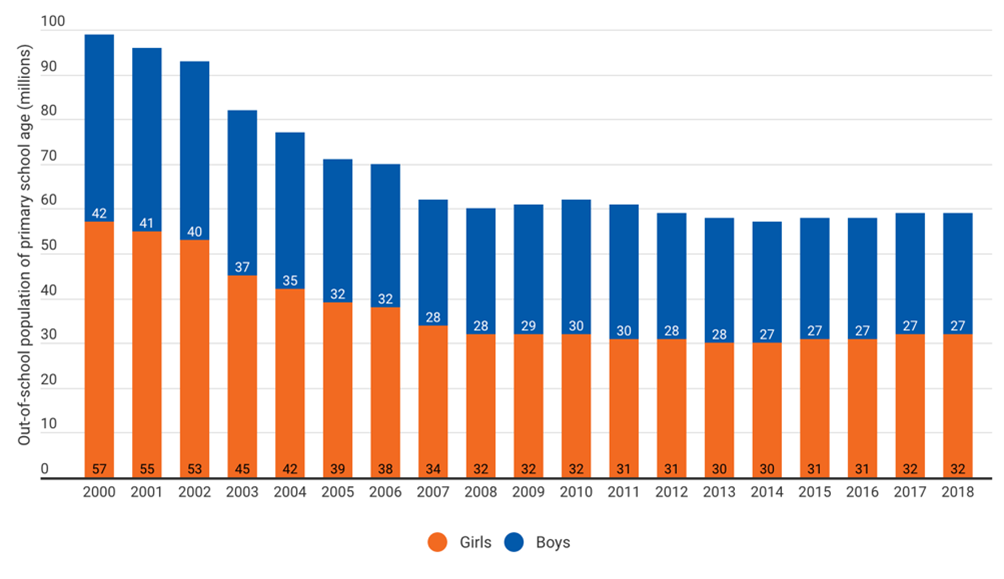Exploring Gender parity in Education
Education levelling up has some way to go
A new school year is usually a time when most children look forward to a new classroom, desk and a teacher. However, what if they have no classroom, no desk and no teacher? War and conflict can interrupt education, causing years of disruption and with girls being particularly more vulnerable than boys. Education is not patient and does not wait for those who are excluded or left behind. This article looks at the patterns in gender parity apparent in varying levels of education.
UNICEF reports c.32 million girls at a primary school age, c.30 million girls at lower secondary school age and c.67 million girls of upper secondary school age are excluded from school, across the world.
Moreover, only 49% of countries have achieved gender parity in primary education, with Sub Saharan Africa (SSA) recording the highest rate of gender disparity at this level (c. 1 in 4 girls and 1 in 5 boys are excluded from primary education in SSA). Only 42% and 24% of countries have achieved gender parity at a lower secondary education and upper secondary education level respectively. This is due to barriers such as poverty, child marriage and living in areas of conflict.
The levels of global gender parity at a primary school level are as follows.
Figure 1: Out of school population of primary school age 2000-2018,
Source: UNESCO Institute for Statistics global databases, 2019
However, a reversal in the gender gap favouring women is witnessed at a tertiary level (post-secondary education level) whereby more women have completed a tertiary qualification compared to their male counterparts. For example, in 2019, 51% of women aged between 25-34 years held a tertiary degree compared to 39% of men on average across OECD countries. This is driven by program orientation (i.e., women are more likely to study subjects such as education, welfare and health), with statistics showing that women benefit greater from tertiary education compared to men.
Thus, the trends in gender parity reflect that there is much to be done in achieving Sustainable Development Goals 4 and 5 (Quality education for all, Gender equality).
The Global Impact Initiative’s (GII) Gender Equality fund is the world’s first, actively managed impact fund for Women and Girls. Gender equality is long overdue, and this investment solution enables investors to utilise investment capital to deliver empowerment for women in the workforce and better outcomes for girls' health, education, nutrition and social and economic empowerment. The fund has partnered with Robeco, Grameen Australia, Malala Fund, UN Women Australia, UNICEF Australia and World Vision to accelerate social impact for women and girls.
This innovative, impactful fund is available as an Australian Fund and a Dublin-based UCITs and the minimum investment is only $5,000. Please contact us via our website for more information should you be interested in investing in gender equality and helping to close the gender gap!

